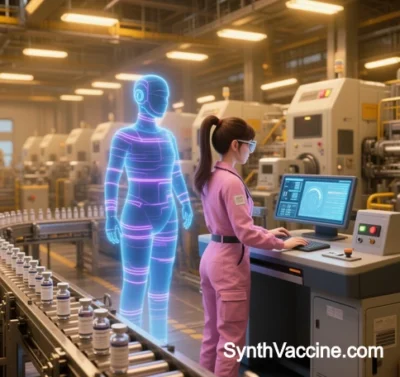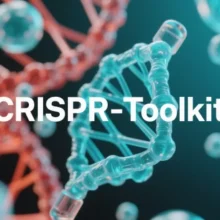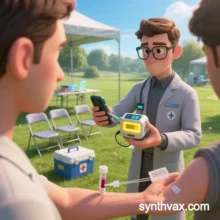
Synth Vaccine (Synthetic Vaccine): Advances in Viral and Cancer Vaccine Development
From Precision Antigen Design to Industrial-Scale Innovation
Viral Vaccines: Synthetic Biology-Driven Rapid Response and Broad Protection
1. mRNA Technology Advancements
- Antigen Optimization:
- Structural Biology-Guided Design: Stabilizing prefusion conformations (e.g., Moderna’s mRNA-1273) by introducing disulfide bonds enhances neutralizing antibody titers.
- Broad-Spectrum Antigen Engineering: Chimeric antigens combining conserved epitopes (e.g., influenza H1N1/H3N2 HA fusion) induce cross-protective immunity.
- Delivery Innovations:
- Engineered Lipid Nanoparticles (LNPs): pH-responsive ionizable lipids (e.g., SM-102) improve endosomal escape efficiency.
- Alternative Carriers: Virus-like particles (VLPs) enable lung-targeted mRNA delivery via electrostatic adsorption (e.g., BioNTech’s BNT161b3).
2. Clinical Breakthroughs
- Rapid Response Platforms:
- Moderna’s mRNA-1010 flu vaccine demonstrated 71.5% efficacy against H3N2 in Phase III trials, outperforming traditional inactivated vaccines.
- CureVac’s second-gen RNA vaccine (CV2CoV) reduced viral load by 99% in primates post-single dose.
- Universal Vaccine Development:
- mRNA vaccines targeting conserved coronavirus fusion peptides (FP) protect against SARS-CoV-2, MERS-CoV, and bat coronaviruses in murine models.
Cancer Vaccines: Integrating Personalized Neoantigens and Synthetic Biology
1. Neoantigen Discovery and Design
- AI-Driven Prediction:
- Multi-omics integration (exome sequencing, HLA typing, mass spectrometry) improves neoantigen prediction accuracy.
- Epitope-MHC binding affinity optimization excludes Treg epitopes to reduce immune tolerance.
- Vaccine Formats:
Type Features Clinical Example Peptide Vaccines 20-30 long peptides (CD4+/CD8+ epitopes) Neon Therapeutics’ NEO-PV-01 + PD-1 inhibitors achieved 48% ORR in melanoma. mRNA Vaccines Encodes 34 neoantigens; dendritic cell-targeted Moderna’s mRNA-4157 + Keytruda reduced recurrence risk by 44% in Phase III. Viral Vector Vaccines Adenovirus/poxvirus vectors carry 60 neoantigens Nouscom’s NOUS-209 achieved 62% disease control in colorectal cancer.
2. Manufacturing Innovations
- Modular Production:
- PCR-linearized DNA templates reduce plasmid production cycles from 14 days to 48 hours.
- Engineered T7 RNA polymerase (e.g., Y639F mutant) boosts mRNA yield with minimal impurities.
- Combo Therapies:
- BioNTech’s BNT111 + PD-1 inhibitors achieved 34% ORR in advanced melanoma.
- HSV-1 vectors encoding IL-12 mRNA activate CD8+ T-cell infiltration in tumors.
Challenges and Synthetic Biology Solutions
1. Viral Vaccine Durability
- Challenge: Viral mutations (e.g., influenza antigenic drift) shorten protection.
- Solutions:
- Target conserved polymerase epitopes (e.g., influenza PA).
- Self-amplifying RNA (saRNA) extends antigen expression, boosting antibody persistence.
2. Cancer Vaccine Personalization
- Challenge: High false-positive neoantigen rates and lengthy production (4–6 weeks).
- Solutions:
- Single-cell TCR sequencing prioritizes clonally expanded neoantigens.
- AI platforms (e.g., Neon’s NEOPLEX) enable 21-day biopsy-to-vaccine cycles.
3. Scalability and Cost
- Challenge: Customization drives costs to 100k–500k/dose.
- Solutions:
- Off-the-shelf vaccines target high-frequency mutations (e.g., KRAS G12D).
- Distributed manufacturing (e.g., BioNTech’s BioNTainer) cuts costs to <$10k/dose.
Future Directions: Paradigm Shifts in Vaccine Design
1. Cross-Disciplinary Technologies
- DNA Origami Carriers: Self-assembling nanostructures target lymph nodes with 90% efficiency.
- Glycosylated Antigens: Synthetic glycopeptides (e.g., Tn-MUC1) + saponin adjuvants induce high IgG titers.
2. AI-Driven Platforms
- AlphaFold Optimization: Predicts antigen-antibody structures to guide epitope focusing.
- Quantum Computing: IBM’s quantum processors accelerate epitope-HLA screening 100-fold.
3. Expanded Clinical Applications
- Preventive Cancer Vaccines: Target precancerous antigens (e.g., BRCA1 mutations).
- Resistance-Reversal Vaccines: Combine tumor stem cell antigens (e.g., CD133+) with chemotherapy.
Ethical and Industry Outlook
- Biosafety: CRISPR-based molecular barcodes track vaccine antigen evolution in vivo.
- Market Projections: Global synthetic vaccine market to exceed $150B by 2030, led by cancer therapies (>60% share).
- Accessibility: Modular factories (e.g., Moderna’s mRNA Access) cut costs to <$1k/dose for low-income regions.
Conclusion
Synthetic vaccines are redefining infectious disease control and cancer therapy. mRNA platforms enable 100-day pathogen-to-clinic responses, while neoantigen vaccines boost late-stage melanoma survival rates. With AI design, cell-free manufacturing, and biomaterial innovations, the field is entering a “programmable medicine” era. The next decade may witness universal coronavirus vaccines and off-the-shelf solid tumor vaccines, advancing the vision of “one shot for prevention, one shot for cure.”
Data sourced from publicly available references. For collaborations or domain inquiries, contact: chuanchuan810@gmail.com.






